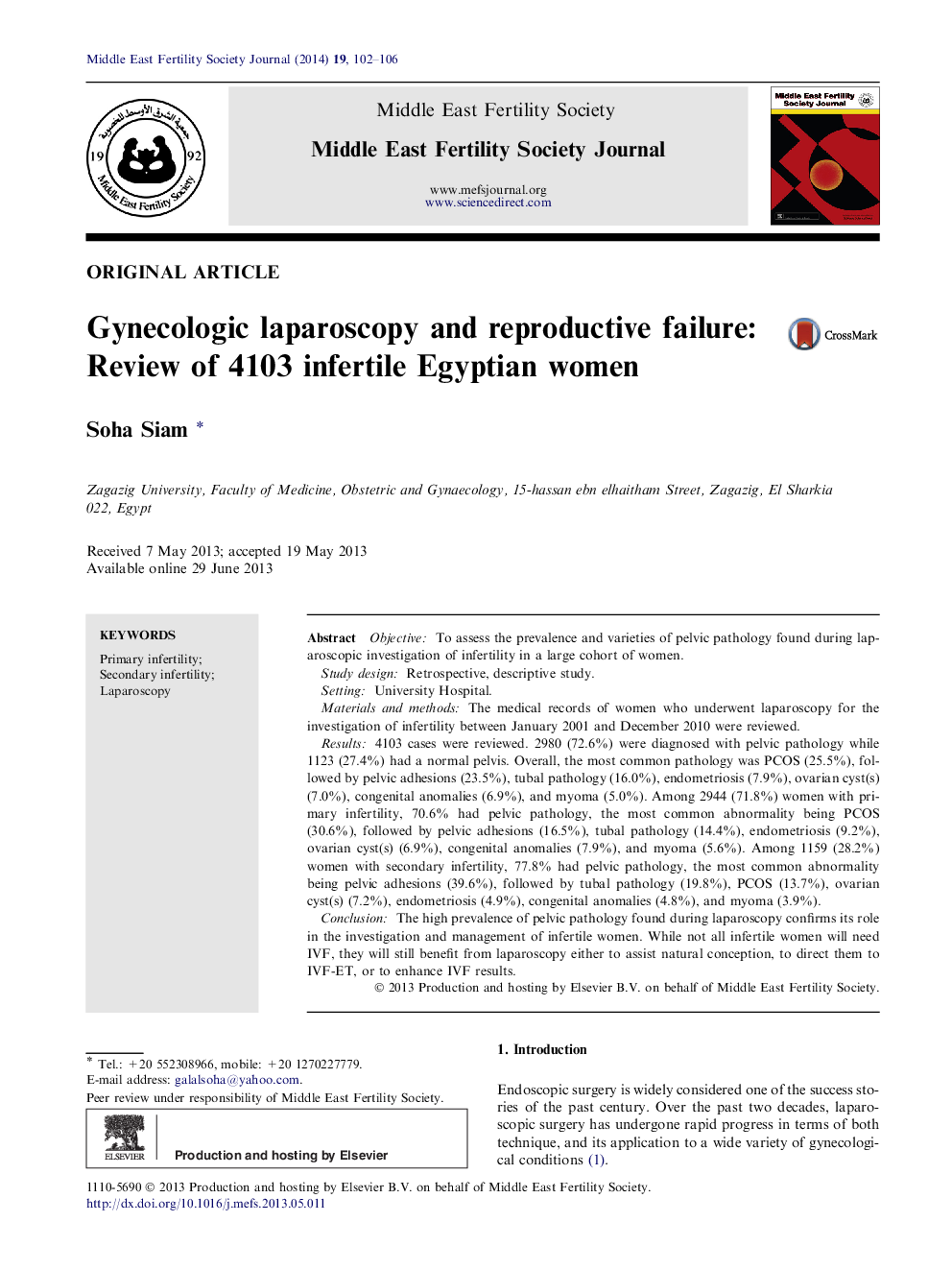| Article ID | Journal | Published Year | Pages | File Type |
|---|---|---|---|---|
| 3966172 | Middle East Fertility Society Journal | 2014 | 5 Pages |
ObjectiveTo assess the prevalence and varieties of pelvic pathology found during laparoscopic investigation of infertility in a large cohort of women.Study designRetrospective, descriptive study.SettingUniversity Hospital.Materials and methodsThe medical records of women who underwent laparoscopy for the investigation of infertility between January 2001 and December 2010 were reviewed.Results4103 cases were reviewed. 2980 (72.6%) were diagnosed with pelvic pathology while 1123 (27.4%) had a normal pelvis. Overall, the most common pathology was PCOS (25.5%), followed by pelvic adhesions (23.5%), tubal pathology (16.0%), endometriosis (7.9%), ovarian cyst(s) (7.0%), congenital anomalies (6.9%), and myoma (5.0%). Among 2944 (71.8%) women with primary infertility, 70.6% had pelvic pathology, the most common abnormality being PCOS (30.6%), followed by pelvic adhesions (16.5%), tubal pathology (14.4%), endometriosis (9.2%), ovarian cyst(s) (6.9%), congenital anomalies (7.9%), and myoma (5.6%). Among 1159 (28.2%) women with secondary infertility, 77.8% had pelvic pathology, the most common abnormality being pelvic adhesions (39.6%), followed by tubal pathology (19.8%), PCOS (13.7%), ovarian cyst(s) (7.2%), endometriosis (4.9%), congenital anomalies (4.8%), and myoma (3.9%).ConclusionThe high prevalence of pelvic pathology found during laparoscopy confirms its role in the investigation and management of infertile women. While not all infertile women will need IVF, they will still benefit from laparoscopy either to assist natural conception, to direct them to IVF-ET, or to enhance IVF results.
